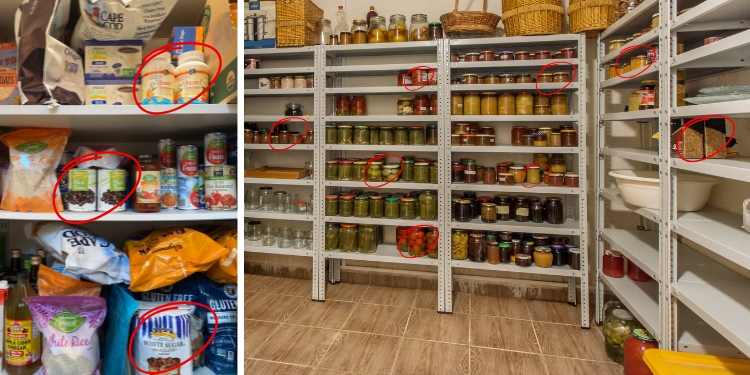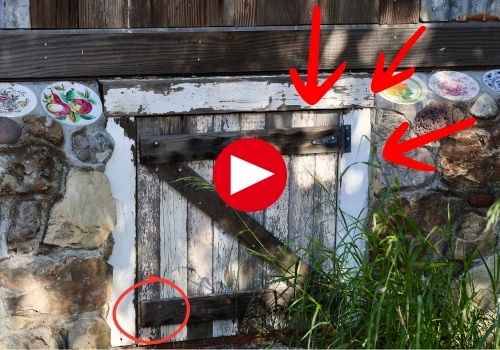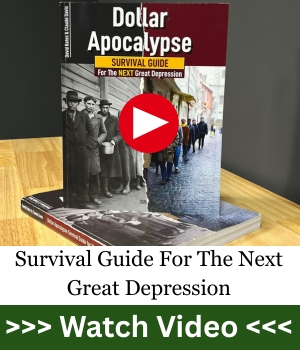You’ve got shelves stacked with rice, beans, canned meat, pasta, peanut butter, and buckets full of oats. Your pantry looks like a fortress. Maybe you’ve even vacuum-sealed extras, filled five-gallon buckets with mylar bags, and labeled everything by expiration date. It feels like you’re prepared for anything.
But here’s the uncomfortable truth most preppers eventually face: just because your pantry is full doesn’t mean you’re going to last.
It’s not about how much food you’ve got. It’s about how you use it.
So the real question is—how long until it all runs out?
Why Preppers Still Run Out of Food
Stockpiling is only one part of the equation. Without a clear strategy, most people chew through their supplies way faster than expected. Stress eating, poor planning, or simply not tracking portions can turn what feels like a six-month stash into a frantic three-week rationing nightmare.
Related: Deinfluencing You: 14 Items You Should Stop Stockpiling Right Now
I’ve seen it happen. People assume a shelf full of canned soup equals security, but without proper planning, it’s like trying to run a marathon with a backpack full of candy bars.
When the grocery stores are empty and there’s no more Amazon Prime to bail you out, your food strategy becomes just as important as the food itself.
A Full Pantry Isn’t Always a Smart Pantry
Let’s talk about some of the hidden traps people fall into, even when they’ve spent months or years preparing. It’s easy to feel a false sense of security when you’ve got stacks of food, but the reality is that small miscalculations and overlooked details can unravel your hard work fast. These mistakes aren’t about laziness—they’re usually the result of focusing on quantity over usability, or underestimating how stressful daily survival can affect eating habits and decision-making.
- Calorie Miscalculations: You might have 300 pounds of food, but if it’s mostly rice and beans, you may not be hitting the daily calories your body needs. Most adults require 1,800 to 2,500 calories a day, and hard physical labor—like chopping firewood, hauling water, or security patrol—can bump that even higher.
- Poor Nutritional Balance: A pantry heavy on carbs but light on protein and fat will wear you down fast. You might feel full, but your energy will tank, and your body will suffer.
- Repetitive Meals = Palate Fatigue: Eating the same thing over and over again might keep you alive, but it can mess with morale. People (especially kids) may start skipping meals, leading to waste and nutritional loss.
- Untracked Consumption: Little bites here and there add up. One extra scoop of oats every morning, or giving second helpings without adjusting the plan, can cause you to run out weeks ahead of schedule.
- Spoilage: You need to know how to preserve and store the food you’re counting on during a crisis. Without proper storage space—like this underground bunker that can double as a root cellar, even in extreme scenarios such as the aftermath of a nuclear attack—you risk having much of your food spoil quickly.
You Need a Plan Before You Pop a Can
If your approach to survival eating is “We’ll figure it out when the time comes,” you’re already behind. The time to figure it out is now—while you still have time to adjust, experiment, and plan.
Here’s how to make your stockpile work smarter, not just harder.
Step 1: Inventory Everything You’ve Got
It’s time to get brutally honest. Go through every bucket, bin, can, and jar and tally up exactly what you have. Don’t just estimate—get specific:
- How many servings?
- How many calories per serving?
- What’s the protein and fat content?
- When does each item expire?
Use a spreadsheet or a written chart to track it all. Break it down into food categories like grains, proteins, canned goods, fats, and snacks. This helps you see where you might have too much of one thing and not enough of another.
Once you’ve totaled it up, calculate how much food each person in your household needs per day. Most adults need between 2,000 and 2,500 calories if they’re doing physical labor. Multiply that number by the number of people and the number of days you want to survive.
That’s how you figure out if your supply is enough—or if you’re overestimating what you’ve got.
 PRO TIP: During the Cold War, the U.S. developed the concept of the Doomsday Ration, which included:
PRO TIP: During the Cold War, the U.S. developed the concept of the Doomsday Ration, which included:
- Survival Biscuits (crackers)
- Sugar cubes or glucose tablets
- Powdered milk tablets
One metal can of survival biscuits (17.5 lbs) held about 10,000–12,000 calories—enough to keep one person alive for roughly 7–10 days at minimal survival levels (about 1,200–1,400 calories per day).
Back then, a full weekly ration for one person (two cans of biscuits, plus milk tablets and sugar) cost the U.S. government only $2.50–$3.00 per week. In today’s money, that’s about $25–30 per week—far cheaper than any modern prepper food supply.
Of course, you can’t get Doomsday Rations from the government anymore, and you definitely won’t find them on store shelves. But you can make your own version of this real lifesaver. Someone’s put together the complete list of ingredients and exact quantities you’ll need—and you can find it right here!
Step 2: Build a Real Meal Plan
Don’t just hoard ingredients. Build meals. Think about how you’re going to turn what you have into daily meals that are satisfying, easy to prepare, and nutritionally balanced.
Create a basic meal rotation. Use ingredients that store well and can be mixed in various ways. Plan at least two weeks’ worth of rotating meals so you’re not eating the exact same thing every day.
Here’s a simple example:
- Breakfast: oatmeal with powdered milk and dried fruit or peanut butter
- Lunch: rice and canned chicken with dehydrated vegetables and seasoning
- Dinner: pasta with canned meat, tomato powder, and herbs
- Snacks: crackers and peanut butter, trail mix, dried apples, powdered pudding
Test this plan. Eat from it for a few days and adjust. If you find yourself getting bored or lacking energy, tweak your ingredients or meal balance.
It’s important to understand that long-lasting survival foods are often loaded with sugar.
For anyone struggling with conditions like diabetes or thyroid problems, too much sugar can quickly become dangerous and aggravate existing health issues.
A safer approach is to rely on a natural management protocol such as the one you can find here—but always make sure that any sugar intake is done under your doctor’s guidance.
PRO TIP: If you’re even slightly interested in nutrition, the concept of a meal plan is surely not new to you. In everyday life, you can afford to be a little careless sometimes.
Maybe you don’t always stick to your weekly plan. Or you adjust things along the way.
In survival situations, however, your room for error will be nonexistent. You’ll need to make the right decisions, carefully calculated.
You have the option to be guided by a specialist in the field—a path I strongly recommend you take.
This is a guide created by survival expert Joel Lambert, with decades of experience as a Navy SEAL. In A Navy SEAL’s Bug-In Guide, he provides an in-depth resource not only on meal planning but also on food stockpiling.
When forums, ChatGPT, or Google will no longer be there to give you information, you’ll still be able to pick up a book at home and know exactly how to manage your food in the most efficient way.
Step 3: Practice Portion Control and Tracking
One of the biggest mistakes people make is over-serving. Start measuring and tracking how much each person eats. Use a whiteboard or clipboard in your pantry to track daily consumption.
Make it a habit. Just like budgeting money, budgeting food ensures your supply lasts as long as intended. When you’re tracking your use in real-time, you can catch problems before they snowball.
Encourage discipline. When everyone’s on the same page, it becomes easier to stretch your supply without stress or resentment.
Step 4: Use Smart Cooking Techniques
Every meal you make costs more than food—it costs fuel, water, and time. Make cooking more efficient by focusing on low-fuel, low-water methods:
- One-pot meals reduce cleanup and fuel use
- Solar cookers are free once set up and great for slow cooking
- Rocket stoves are extremely efficient and easy to make
- Thermal cookers (like hayboxes) allow slow cooking without burning fuel
Avoid meals that require baking unless you’ve got an off-grid oven or regular access to fuel and flour. Think ahead: will your cooking method be sustainable long-term?
PRO TIP: Food will be a major concern in any crisis situation. Without a doubt, you’ll want to stretch the lifespan of your pantry stockpile as much as possible.
The same goes for water, of course. That is—unless you take the smart route and invest in this military-grade water generator.
Developed by U.S. Army specialists, The Water Freedom System was kept secret until recently. Now, the assembly plans have been released to the public and are available to you.
The big advantage? It needs nothing but air to produce water—and anyone can put it together. No plumber required.
So, if food is limited, at least make sure water is always within reach. Because this kind of long-term water generator can produce up to 50 gallons per day!
Step 5: Supplement Strategically
Even the best-stocked pantry has limits. That’s why supplementing is key. You don’t need to grow everything you eat—but having a few additional food sources can help you maintain balance and variety.
Start small:
- Grow lettuce, herbs, and green onions in windowsills or containers
- Raise a few chickens for eggs if space allows, just like the Amish do(you should learn a thing or two from their strategy by turning to The Amish Ways Book)
- Learn the local edible wild plants in your area and how to safely harvest them
- Connect with neighbors to trade your excess goods for theirs
The more options you have, the less dependent you’ll be on what’s in your pantry. Long-term sustainability is the true endgame.
A strong pantry is the base, but a sustainable lifestyle is the goal.
Bonus Pantry Stretchers
 Sometimes it’s the little things that stretch your supply or boost morale. Here are a few pantry MVPs you shouldn’t overlook:
Sometimes it’s the little things that stretch your supply or boost morale. Here are a few pantry MVPs you shouldn’t overlook:
- Bouillon cubes: Add depth to basic meals.
- Powdered cheese or butter: Adds fat and flavor when you need it most.
- Spices and seasonings: Morale-boosters that take meals from tolerable to enjoyable.
- Condensed milk and cocoa powder: Instant treats that feel like luxury.
Final Thoughts: Your Pantry Needs a Purpose
A full pantry is a great feeling. But a full pantry with a plan? That’s power.
Without a strategy, you’ll burn through supplies fast, miss nutritional needs, and find yourself scrambling way too soon. But with some forethought, tracking, and basic meal planning, you can stretch your supplies far beyond what you thought possible—and stay healthier and more energized while doing it.
Don’t wait until you’re in a crisis to figure this stuff out. Practice now. Use weekends to rotate through your food plan, try new recipes, and track portions. Make sure your pantry isn’t just full—but ready.
Stay fed. Stay focused.
I tried The Water Freedom System and was satisfied with it, but I also wanted an alternative that could help me in case I ever have to bug out during or after an SHTF scenario. That’s why I also built this backpack-sized water generator—it cost me very little, and I know I’ll be able to take it with me even in the toughest situations. I strongly advise you to do the same (just click here)!
You may also like:
10 Long-Lasting Foods You Can Get From Food Banks
Produce Your Own Electricity For Free For Decades To Come (Video)
35 Foods That Can Last a Century
Why Your Stockpile Might Be Doomed from Day One
The Pioneer Dish That Never Ends: Perpetual Soup (Perpetual Stew)

























Do we have enough to last.
The answer is no.
Then, how will we survive with out replinishing or supplies. If the grid is down, you look and see that room full of food and supplies is getting low.
You start to think can I go and get more supplies. The answer is no.
The grid has been down for weeks now.
What can I do.
1. Is don’t lose control with the one thing that can help you and your family, Your mind…
2. Okay, think what can I or we do to help us.
Use your mind and think back to the skills that you have learned, you were paying attention.
3. Think, what do we need most at this time, food, water, medical, ammo. What you think you need most. Start there and work your way into a place you can fill good about.
4.if you have not prepared for any thing, because you think nothing is going to happen, then you will not last thru the hard times, that are on there way to America.
My heart is sad, because I see so so many weak people and they will have so much come on them that they will not last, no time after it hits. Most sad is that they laugh when you say something about prepping or survival. They look at you like you are crazy.
I am so glad they think that I am crazy, because I am prepared to face this that is on its way to your door.
Plus I have Jesus as my lord and Savior. Being washed by the blood of Christ gives me the mind set that I will need to make it.
Then up in to the clouds I go.
I can’t imagine what people will be like when all this come to a head and then POPS. What a mess it will be. So sad to think about.
stay sharp
PS: really makes you think. Can we survive.
Can you. ???
Good article. Thank you Matt…
People don’t think you are crazy because you do NOT tell them anything. They WILL remember your comment when they are out of food. Best not say anything. I was emergency services…here is what people heard
“Failure to plan on your part does not constitute an emergency on my part.”
They knew I meant it. “if you are going to be dumb, you need to be tough.” They heard that, too.
People don’t think you are crazy because you do NOT tell them anything. They WILL remember your comment when they are out of food. Best not say anything. I was emergency services…here is what people heard
“Failure to plan on your part does not constitute an emergency on my part.”
They knew I meant it. “if you are going to be dumb, you need to be tough.” They heard that, too.
Well, ok then, I do agree that this is a fairly good article… and, does trigger a thought that I should take time to check deeply in my ration storage… Its just me, and a dog, I don’t have to worry about others… hopefully… I have two types of rations, my pantry rations, and my prepping/freeze dried rations… Pantry rations, I have calculated to be close to 4 to 6 mos, as it varies with my grocery shopping… I always replace what I use, plus one or two, that way the stock grows,.. been using this method since I moved to my BOL 2 1/2 yrs ago… My provision stockage happens once a month… I order it, pick it up, stock it.. the only thing I don’t do, and will start doing is create a working inventory of everything in my pantry. I shop using coupons and sales events to assist in cost cutting… Money is a huge factor when stocking provisions… my actual prepping supplies, freeze dried stuff, I’ve been stocking for over 15yrs… adding stock when and if the items are on sale.. I rotate my freeze dried stock by using some of it when I go camping, fishing, hunting, again replacing items + 1 or 2… That works out well, so far… again, this article is very much thought provoking causing me to spend a little more time monitoring and keeping closer tabs on it all… I do mandatorily remember the Alamo, Live Long and Prosper, Gig Em !!
Howdy from high in the desert swamp,
One thing I started doing is freezing leftover meat. When I have enough for 3-4 jars I pressure can them. There are times when I just have a canning day. I don’t sleep well so I set the canner and tools out. Jars and such. If I get up at 0200 I start heating the water in the canner. Once I get it to boiling, I warm the meat, pack seal and put back in the boiling water. Boil for 80 minutes 10# pressure and let sit until cool. The stove and canner do all the work. I need to pull out all the jars and reset them old dates in front. About once a week I open a jar from 2021 or 22 and try it. I haven’t run across a bad one yet. I suspected one so I tossed it. Kept in the dark at a near constant temp helps extend the life I do believe.
It’s getting to be prickly pear apple season. Time to make jelly.
Remember the Alamo
Remember 9/11
Remember North Carolina
Remember to have your soul prepared
One thing they forgot was a good well rounded supply of vitamins.
In particular those extra vitamin C ones.
You also need non iodized salt too.
Honey and real maple syrup can add sweetness and calories and lasts a LONG time.
Deep tissue massage offers incredible benefits for relieving chronic pain, reducing muscle tension, and improving flexibility. This therapy promotes better blood circulation, faster recovery, and long-lasting relaxation. Ideal for athletes, professionals, or anyone seeking stress relief and improved wellness through targeted massage techniques.
you guys are wonderful, hats off to all of you.
I think we need a prep system code, like
cat 1 – can I make it thru this ICE STORM
cat 2 – can I make it for 45 days
Cat 3- can I make it for 1 year
Cat 4 – can I make it 3 years and beyond
What does SHTF mean ? to some, they are prepped if they can go 48 hrs with no electric.
For others, we are looking at – what happens after 3 years and my seeds have a problem germinating.
I would like to mention, WHEN does it happen ? if its July 25th, your not planting much before its just too late. If its march first, can you last until you plant and harvest.
If you live OUT, you will have venison available, thats most of your diet SOLVED, now add the trimmings. If you dont have venison roaming around you, might better figure out you DONT have room to survive long term.
Like Ant said, your Mind is Important above all else. Its your best Weapon, best tool, your best friend, you wont last at all if you cant stay calm and think things thru.
rice and beans, man thats HARSH after about 4 days. Every third day, add bullion, life is much easier that way. Food is everything ! but you wont last a full week without water.
How do you live 3 years with no medication ? and if you have heart or diabetic problems ?
This was a very timely article for me. I have just counted up the contents of my deep pantry for number of servings and total calories. It was way less than another family thought it would be but about where I expected. It is very easy to get into the mindset that a food supply will last longer than it really will. I am now in the midst of meal planning using an estimate of 1750 calories (to include at least 3 oz of meat) for each person each day. I will make adjustments to round things out as the meal plans come together but the totals will stay about the same. One needs to balance the amount stored with being able to rotate and make use of what you have stored. The wife and I are in our 70s and don’t expect to be very active, just want to be self supporting and not be a burden on others.
Pretty common for us Americans to be 20 pounds overweight. Most of us could go on half rations for a month just to end up a healthy weight. You’re not really hungry until you look like a Palestinian.
Hunger is in every place in the world.
There will always be hunger.
“Pray for all” that go hungry every day and night.
Half rations from the onset of any disaster would be a smart move, if it all goes gunny bag, do you want to be that family not in saggy clothes? People will notice and figure out why.
Old Para, you just gave me a good reason to put the fork down . . . Do you work for my Dr ?
as a diabetic, not living close to Aplain, I think 1/3 rations until I look famished, and half rations after that might be my best answer.